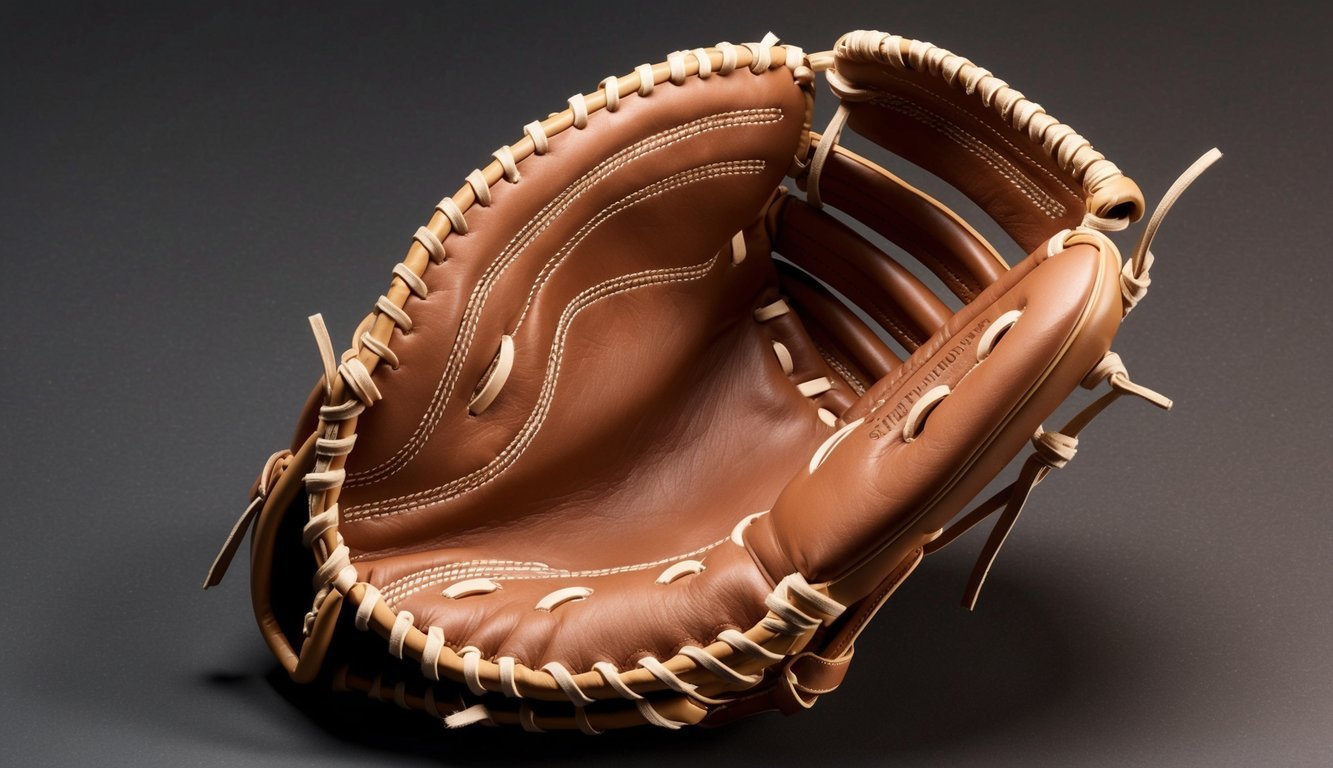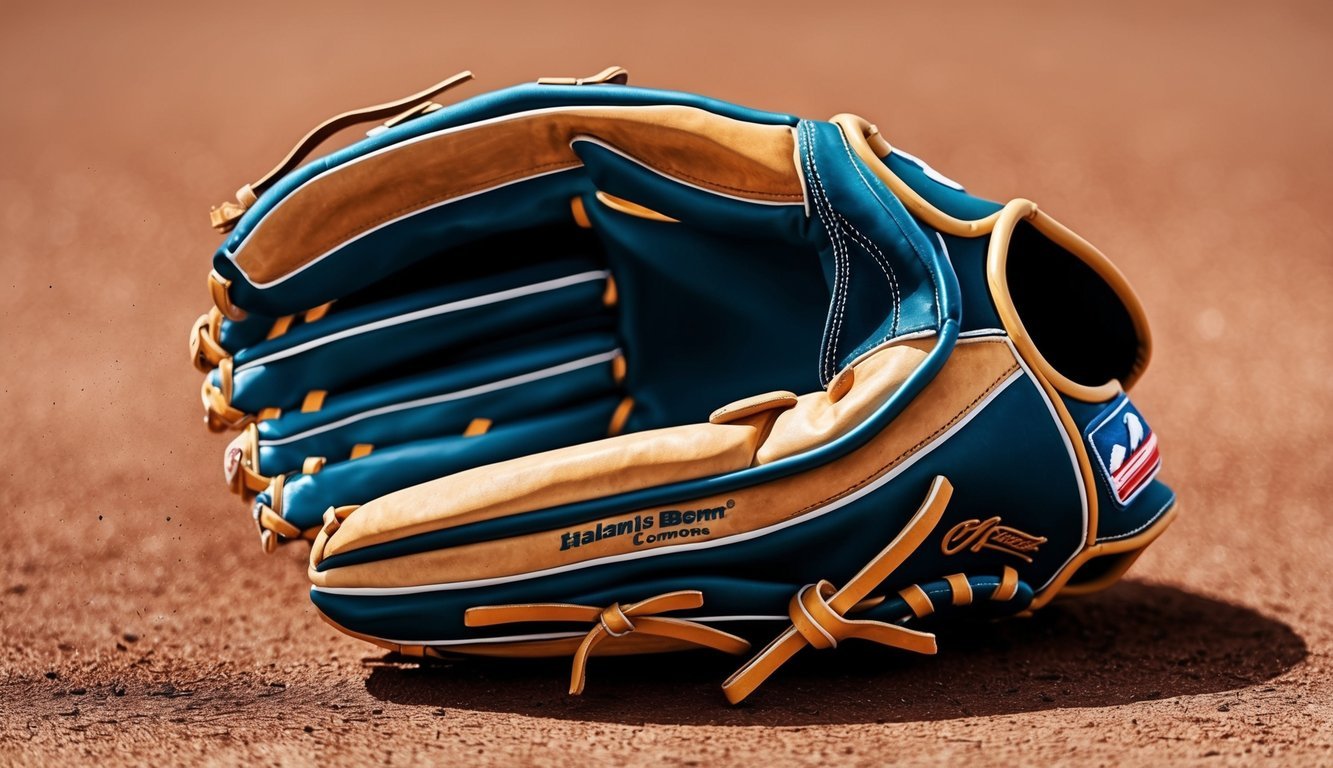Baseball gloves are essential equipment for players, providing protection and enhancing performance on the field.
A key feature of any glove is its pocket – the area where the ball is caught and secured. The pocket of a baseball glove is typically located in the palm area, between the thumb and index finger.
This critical part of the glove is designed to create a secure holding space for the ball.
Players rely on a well-formed pocket to catch and control the ball effectively during gameplay.
The pocket’s depth and shape can vary depending on the player’s position and personal preferences.
Forming the perfect pocket takes time and effort.
Players often use various techniques to break in their gloves and shape the pocket to their liking.
This process helps create a comfortable and functional catching area that becomes an extension of the player’s hand on the field.
Understanding the Baseball Glove

A baseball glove is a complex piece of equipment with various components that work together to help players catch and field balls effectively.
The quality of materials used, especially the leather, plays a crucial role in a glove’s performance and durability.
High-quality leather ensures that the glove remains flexible yet sturdy, allowing players to break it in over time for a custom fit.
Additionally, well-stitched lacing and padding contribute to the glove’s overall strength and shock absorption.
Just like a well-fitted glove enhances performance, players also rely on a properly adjusted baseball belt for better comfort and stability during the game.
Components of a Glove
The palm forms the heart of a baseball glove, creating a pocket to securely catch the ball.
Fingers and thumb provide structure and control.
The web, a crucial element, comes in different styles to suit various positions and preferences.
Lacing holds everything together, while the hinge allows the glove to open and close smoothly.
The heel offers additional support at the base.
Each part serves a specific purpose in fielding.
Infielders often prefer shallower pockets for quick ball retrieval, while outfielders may opt for deeper pockets to secure fly balls.
Leather Types and Quality
High-quality leather is essential for a great baseball glove.
Full-grain leather, known for its durability and ability to mold to a player’s hand, is a popular choice.
Steerhide and cowhide are common options, each with unique characteristics.
Premium gloves often use specially treated leather for improved feel and performance.
The leather’s quality affects the glove’s break-in period, longevity, and overall feel.
Softer leathers typically offer better feel but may wear out faster.
Some gloves feature different leather types in specific areas for optimized performance.
The choice of leather can significantly impact a glove’s weight, flexibility, and ability to maintain its shape over time.
Anatomy of the Glove Pocket
The glove pocket is the heart of a baseball glove, crucial for catching and securing the ball.
Its design varies depending on position and player preference.
Pocket Position and Shape
The pocket sits in the palm area between the thumb and pinky finger.
It forms a slight depression where the ball nestles when caught.
For infielders, the pocket is typically shallower and more open, allowing for quick ball transfer.
Outfielders and first basemen prefer deeper, more closed pockets to help secure fly balls and throws.
Pocket shape can be round or oval.
Round pockets are versatile and common in all-purpose gloves.
Meanwhile, oval pockets, found in some outfield gloves, provide a larger catching area.
The web connecting the thumb and index finger also influences pocket shape.
Open webs create a flexible pocket, while closed webs offer more structure.
Pocket Depth for Different Positions
Pocket depth varies significantly across positions.
Infielders use shallow pockets for speedy ball retrieval and transfer.
These pockets measure about 1-2 inches deep, promoting quick plays.
Outfielders need deeper pockets, usually 2-3 inches, to secure high fly balls.
The extra depth helps prevent the ball from popping out during catches or dives.
First basemen have the deepest pockets, often 3-4 inches.
This design aids in scooping low throws and securing catches from infielders.
Catchers use a unique mitt with a very deep pocket to absorb fast pitches.
Their pockets can be up to 5-6 inches deep, providing maximum ball control behind the plate.
Choosing the Right Glove
Selecting the perfect baseball glove involves considering several key factors.
The right glove can significantly improve a player’s performance and comfort on the field.
Size and Fit Guides
Glove sizes vary based on age and position.
Youth players typically use smaller gloves, ranging from 9 to 11 inches.
Meanwhile, adult gloves are generally 11.5 to 13 inches.
Infielders prefer smaller gloves for quick transfers, while outfielders need larger gloves to catch fly balls.
Catcher’s mitts are measured differently, usually between 32 and 34 inches for adults.
A well-fitting glove should feel snug but not tight.
Players should be able to easily open and close the glove.
Custom fit options are available for those seeking a more tailored feel.
Selecting by Position
Each position on the field requires a specific type of glove.
Infielders use smaller gloves with shallower pockets for fast ball transfers.
These typically range from 11 to 11.75 inches.
Outfielders need larger gloves, usually 12 to 13 inches, with deeper pockets to catch fly balls.
Meanwhile, pitchers often use closed web designs to hide their grip, while first basemen use specialized mitts with extra padding.
Catchers require heavily padded mitts with a hinged design for quick catches and throws.
These mitts are essential for handling fast pitches and foul tips.
Brands and Manufacturers
Several reputable brands offer high-quality baseball gloves.
Rawlings is known for its professional-grade gloves used by many MLB players.
Wilson produces durable gloves suitable for various skill levels.
Mizuno gloves are praised for their comfortable fit and break-in period.
Meanwhile, Nokona specializes in handcrafted, premium leather gloves.
All-Star is popular among catchers for their innovative mitt designs.
When choosing a brand, consider factors like durability, material quality, and personal preference.
Some manufacturers offer customization options for a truly unique glove.
Breaking In and Conditioning Your Glove

Breaking in a new baseball glove is an essential process that transforms a stiff piece of leather into a comfortable, game-ready tool.
Proper conditioning ensures the glove’s longevity and performance on the field.
The Break-In Process
Start by applying a small amount of glove conditioner to soften the leather.
Then, work it in gently with your hands, focusing on the pocket area.
Place a ball in the pocket and wrap the glove tightly with rubber bands or a glove wrap.
This helps form the desired shape.
Next, use a glove mallet to repeatedly strike the pocket, mimicking the impact of catching balls.
This technique helps create a deeper, more defined pocket.
Finally, play catch regularly with the new glove.
This traditional method remains one of the most effective ways to break in a glove naturally.
The repeated catching motion will gradually soften the leather and shape the pocket to your hand.
Conditioning Materials and Techniques
Choose appropriate conditioners for your glove’s leather.
Popular options include specialized glove oils, mink oil, and petroleum jelly.
Apply sparingly to avoid oversaturating the leather, which can lead to deterioration.
Some players swear by household items like olive oil or Vaseline, but use these with caution as they may damage the glove over time.
Avoid extreme heat methods like microwaving or leaving the glove in a hot car.
These can dry out and crack the leather.
Instead, try steaming the glove for a few minutes to make it more pliable.
Always follow up steaming with manual shaping and playing catch.
Remember, breaking in a glove takes time and patience.
Consistent use and proper care will result in a well-formed glove that feels like an extension of your hand on the field.
Maintaining Your Glove Over Time

A well-maintained baseball glove can last for years, providing comfort and enhancing performance on the field.
Regular care keeps the leather supple and preserves the glove’s shape.
Cleaning and Storage Tips
Clean your glove after each use.
Brush off dirt with a soft-bristled brush.
For stubborn stains, use a damp cloth with a tiny amount of mild soap.
Avoid soaking the glove or using harsh chemicals.
Apply a leather conditioner sparingly to keep the glove flexible.
Work it in gently with your fingers, focusing on creasings and high-wear areas.
Store the glove in a cool, dry place.
Place a ball in the pocket to maintain its shape.
Avoid leaving it in direct sunlight or hot cars, which can dry out the leather.
Consider using a glove wrap or rubber bands to keep the glove closed when not in use.
This helps maintain the pocket’s shape and prevents the leather from stretching out.
When to Replace Your Glove
Look for signs of wear like torn webbing, loose stitching, or significant loss of shape.
If the padding feels thin or the glove no longer offers adequate protection, it’s time for a replacement.
A glove that’s lost its ability to close properly or has a misshapen pocket may hinder your performance.
If conditioning and re-lacing don’t solve these issues, consider a new glove.
Professional players often replace their gloves annually.
With proper care, recreational players can use a glove for several seasons.
Trust your instincts – if the glove doesn’t feel right, it may be affecting your game.
